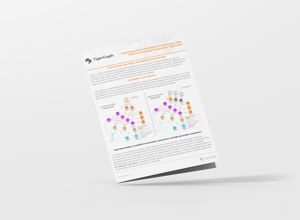 Fraud is a major contributing factor to escalating healthcare costs: fraud costs the U.S. about $60 billion annually and accounts for up to 10 percent of total healthcare spending. Graph analytics can generate graph-based machine learning features for a low risk provider (“good doctor”) and a high risk provider (“bad doctor”) and use them to train an artificial intelligence to look for these profiles within huge healthcare datasets.
Fraud is a major contributing factor to escalating healthcare costs: fraud costs the U.S. about $60 billion annually and accounts for up to 10 percent of total healthcare spending. Graph analytics can generate graph-based machine learning features for a low risk provider (“good doctor”) and a high risk provider (“bad doctor”) and use them to train an artificial intelligence to look for these profiles within huge healthcare datasets.
In this solution brief we examine how graph analytics can be used to find features that can train an artificial intelligence to detect fraud at scale. These include a stable group for ICD codes, the cost of care averaged across a community and potential undeclared prescriber-facility relationships.